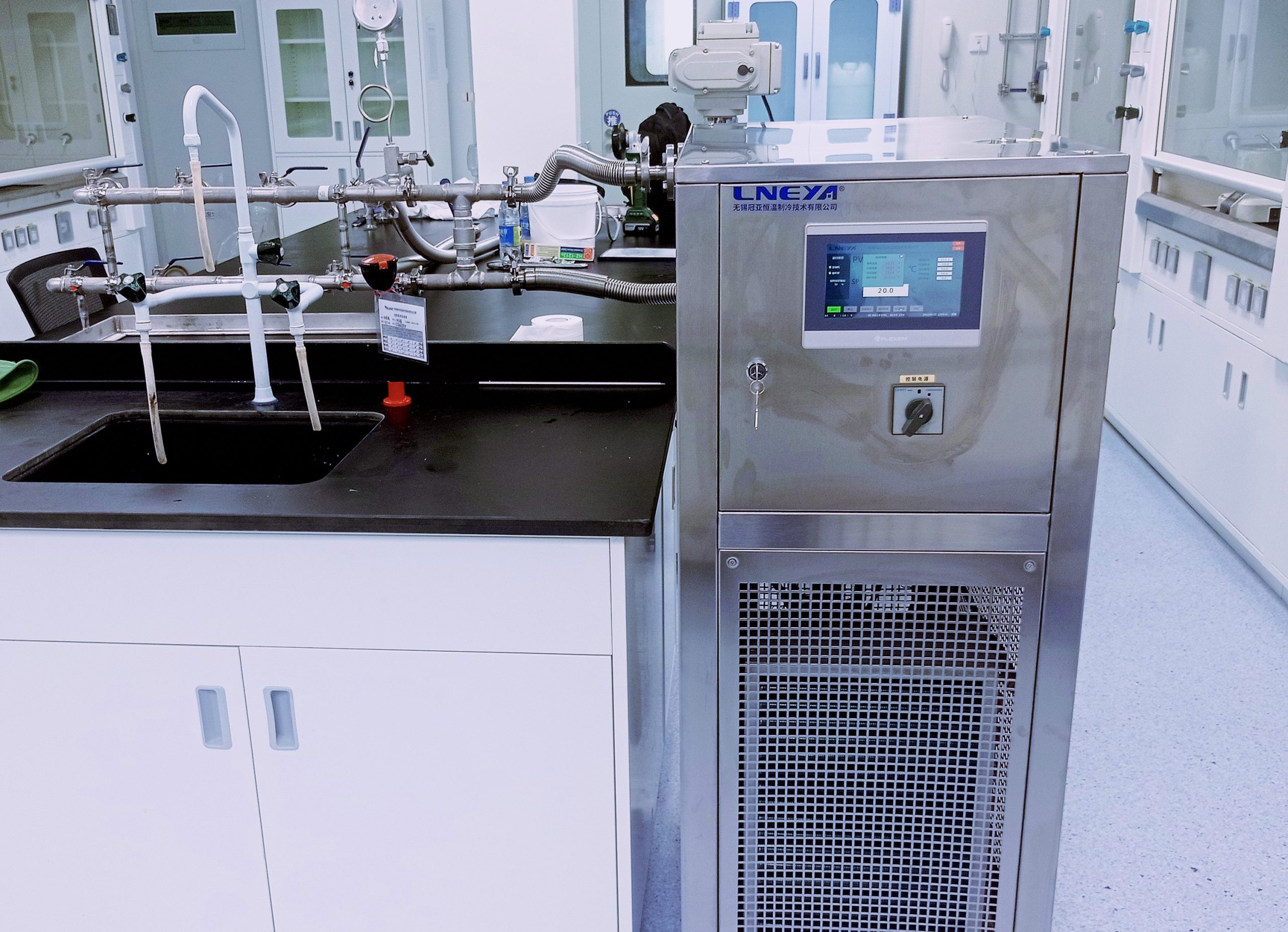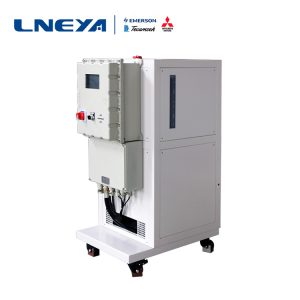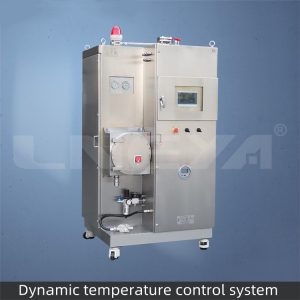There are usually three ways to control the temperature of laboratory reactors

1. Manual control: Manually operate the knob on the front of the reactor controller.
2. Control by PC: The PC and the controller are connected by a network cable, and the operation is carried out on the PC.
3. Controlled by thermostat: Silicone oil is heated through the thermostat, and the thermostat naturally has a temperature control function. Although the thermostat heating limit (usually 250°C) is not as high as that of electric heating (can be as high as 400-500°C), the thermostat rises and falls smoothly, and the low temperature can reach -60/-80°C.
Our LNEYA laboratory reactor temperature control system belongs to the third category. However, the temperature control range is from -120 degrees to 350 degrees. It adopts a fully enclosed pipeline design and a high-efficiency plate heat exchanger, which reduces the demand for heat transfer oil, improves the heat utilization rate of the system, and realizes rapid temperature rise and fall. Continuous temperature control can be achieved in the temperature range of minus 90 degrees to 195 degrees and minus 70 degrees to 220 degrees without pressure.
Jacketed glass reactors are popular in current chemical experiments. The supporting temperature control equipment has also become a matter of widespread concern in the industry. It is known that the cooling and heating temperature in the reaction process has an absolute influence on the reaction process and results. The analysis of the temperature control equipment’s ability to increase and decrease the temperature of the material has become the basic basis for choosing chiller. Then the cooling and heating capacity is not only estimated by imagination and experience, but requires scientific analysis and calculation methods, and needs to calculate the required heating power and cooling power according to the heating rate and cooling rate.
When our technicians communicate with customers, they will first understand the requirements of engineering parameters, such as high and low temperature, how long is the temperature control time, etc., so as to calculate the cooling power and heating power of the chiller required, and determine the available chiller. model, to give customers the most complete temperature control solution. If you also have this need, you can contact us.
Recomendaciones relacionadas
-
What are the functions of the reactor temperature control system?
1590The reactor temperature control system is equipped with various reactors for high and low temperature reflection of liquid and solid. The temperature control system of LNEYA reactor adopts fully closed circulation pipeline, which is efficient in o...
Ver detalles -
Instrucciones de seguridad para el uso de aceite térmico circulante de alta temperatura
1645Para que la circuladora de alta temperatura funcione de forma más eficiente, se recomienda prestar atención a la seguridad y a la elección del aceite conductor del calor. A qué debe prestar atención el fabricante del aceite termoconductor de alta temperatura?
Ver detalles -
Instructions for the use of temperature control equipment for isolation reactors
1365The reaction kettle is a commonly used reactor in pharmaceutical and chemical production. The temperature control equipment of the isolated reaction kettle is realized by controlling two doors, namely the heating water valve and the cooling water ...
Ver detalles -
What is the temperature control of the reactor?
1864The reactor cooling system is one of the common equipment in the chemical industry. It can not only heat but also refrigerate to meet the needs of heating and cooling in the reaction process. There are usually three ways to control the temperatu...
Ver detalles
 LNEYA Enfriadoras industriales Fabricante Proveedor
LNEYA Enfriadoras industriales Fabricante Proveedor














